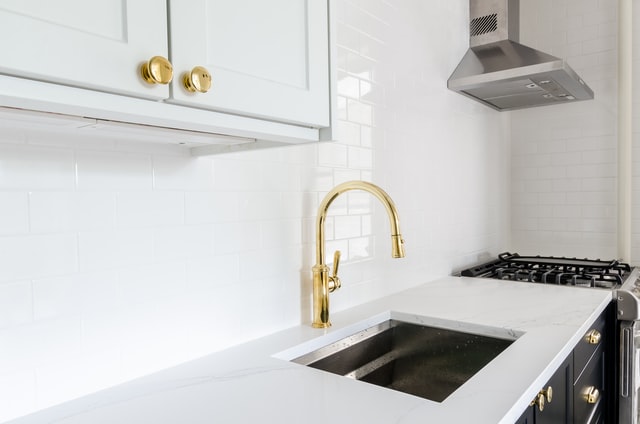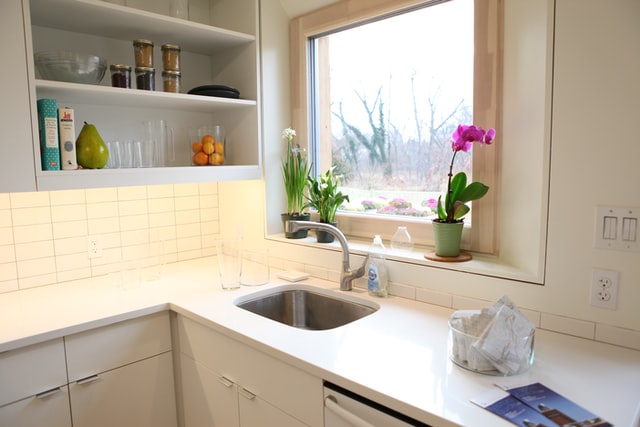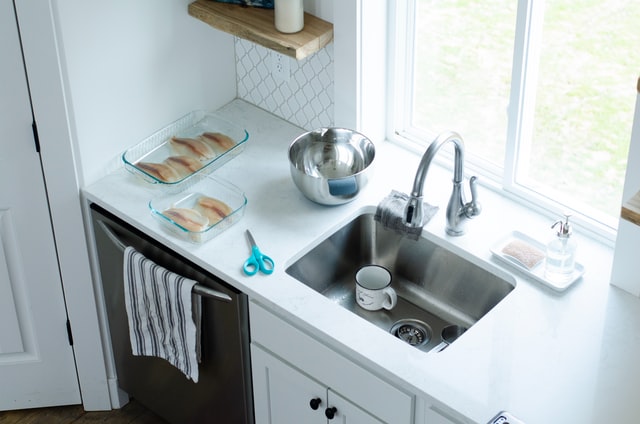All You Need to Know About Choosing a Right Kitchen Sink
Today, there are a variety of sink types and materials to choose from, but stainless steel is by far the most popular and widely used. Stainless steel is chromium, steel, and nickel alloy (or blend). The grade and gauge of stainless steel are two important factors to consider when purchasing a high-quality stainless steel sink. The higher the ratio of nickel and chromium components in stainless steel, the better the grade.
How to Choose the Right Kitchen Sink?
18/10 (which is also referred to as 304 grade) stainless steel is used to make high-quality stainless steel sinks. This indicates that stainless steel contains 18% chromium and 10% nickel. Nickel gives stainless steel its strength, and chromium reacts with oxygen to form a chrome oxide layer that makes stainless steel so corrosion-resistant.
Top-mount sink
When it comes to installing a stainless steel sink in your new kitchen, the two most frequent installation options are under-mount and top-mount.
A top-mount sink, also known as an inset sink, is the most cost-effective option in terms of both the retail price and the cost of installation. The outer rim of the sink, like the one shown above, stands on top of the bench. These sinks normally come with a stainless steel drainer board, but you can opt for one without.
Cutting a hole in the benchtop is required to install them. The border of the sink rim is placed over a bench which is held in place by clips from beneath. Top-mount sinks can be used with any benchtop material, even laminate because the cut-out is fully concealed.
Under-mount sink
Underneath the benchtop is an under-mount sink. Because this type is exposed in this scenario, under-mount sinks are best applicable for benchtops with solid surfaces like engineered stone or granite, where the cut-out can be polished and moisture-proofed. To avoid leaks and ensure that the sink is adequately supported under the benchtop, careful installation and sealing are essential.
The main benefit of an under-mount sink is the continuous flow of the benchtop surface, which makes it simple to wipe crumbs and water directly into the sink. If you want to add a drainer board, look for a sink that comes with one that is specifically designed to fit and is frequently included in the accessory pack.
All-in-one sink and benchtop
You may have your kitchen sink made with the sink integrated into the entire unit. Your benchtop maker will be able to provide you with a variety of sink form options.
The key benefit is that the sink may be fully integrated into the benchtop, eliminating any seals or connections and leaving a continuous flow of stainless steel running the length of the benchtop, including the sink’s dip. This choice isn’t for everyone, but if you like the concept of having an easy-to-clean commercial-style kitchen, it’s worth considering.
How many bowls and what size?
You can choose how many bowls you want and how big each one is. It is usually determined by how much dishwashing you do and what you currently do with your kitchen sink. It suggested keeping at least one huge basin large enough to wash your largest oven pans, roasting dishes, and chopping boards in. It’s tremendously inconvenient to try to wash a huge tray or dish in a sink that simply won’t accommodate it. A second bowl is also useful, but it only has to be around half to three-quarters the size of the main dish. While the main sink is in use, the second sink is typically used to empty pots and pour liquids down the drain.
Zero radius
During your search for the best stainless steel kitchen sink, you may come across the term zero radii. The shape of the sink’s corners is referred to as zero radii. A zero radius sink is rectangular with 90-degree corners and completely straight sides, as opposed to the more traditional and slightly curved corners and sloped sides found in most other varieties.
This type of sink’s plain flat, squared surfaces fit well with minimalist contemporary-style kitchen design, but there is a disadvantage to this aesthetic.
Because of the tight square corners, zero radius sinks are more difficult to clean. You might want to consider how important this look is to you vs how much time and effort you want to devote to cleaning your new sink.
Accessories
Many sinks now come with accessory packs or the ability to buy additional attachments. A drainer basket or tray, a colander, and a chopping board are common examples of these accessories. You can also use two bowls of equal size and a drainage board to cover one of them. When not in use, the drainer tray may be easily removed and placed under the sink.
Some tips to choose the right stainless steel sink
- Gauge Its Metal- what is the best gauge for a stainless steel sink? You want the strong, silent type, which is found in the lowest and hence best gauges, counterintuitively.
- Get a Back-Friendly Depth- When countertop space is restricted, a 9- or 10-inch sink, on the other hand, may hold a lot.
- Rubbery undercoatings and pads- These deaden the sound of running water and clattering silverware for stainless steel sinks while also reducing humidity in the base cabinet.
- Know the Grade-For the best corrosion and stain resistance, look for the 300 series, which contains roughly 18% chromium and 8% nickel. The sink should also have a beautiful satin surface, as opposed to matte-finish stainless steel, which will acquire a better patina over time. It’s not a 300 series sink if it has a magnet in it.
- Drain Position: Moving the drain to the back of the cabinet allows for an additional usable area in the base cabinet and improved drainage when dishes are piled high.
Conclusion
For good reason, stainless steel is the most popular material for kitchen sinks. It’s a tough, low-maintenance material that’s easy to clean and maintain. Stainless steel is also hygienic since it resists corrosion, doesn’t chip, break, or wear out, and is non-porous. A nice stainless steel sink should last a lifetime!



